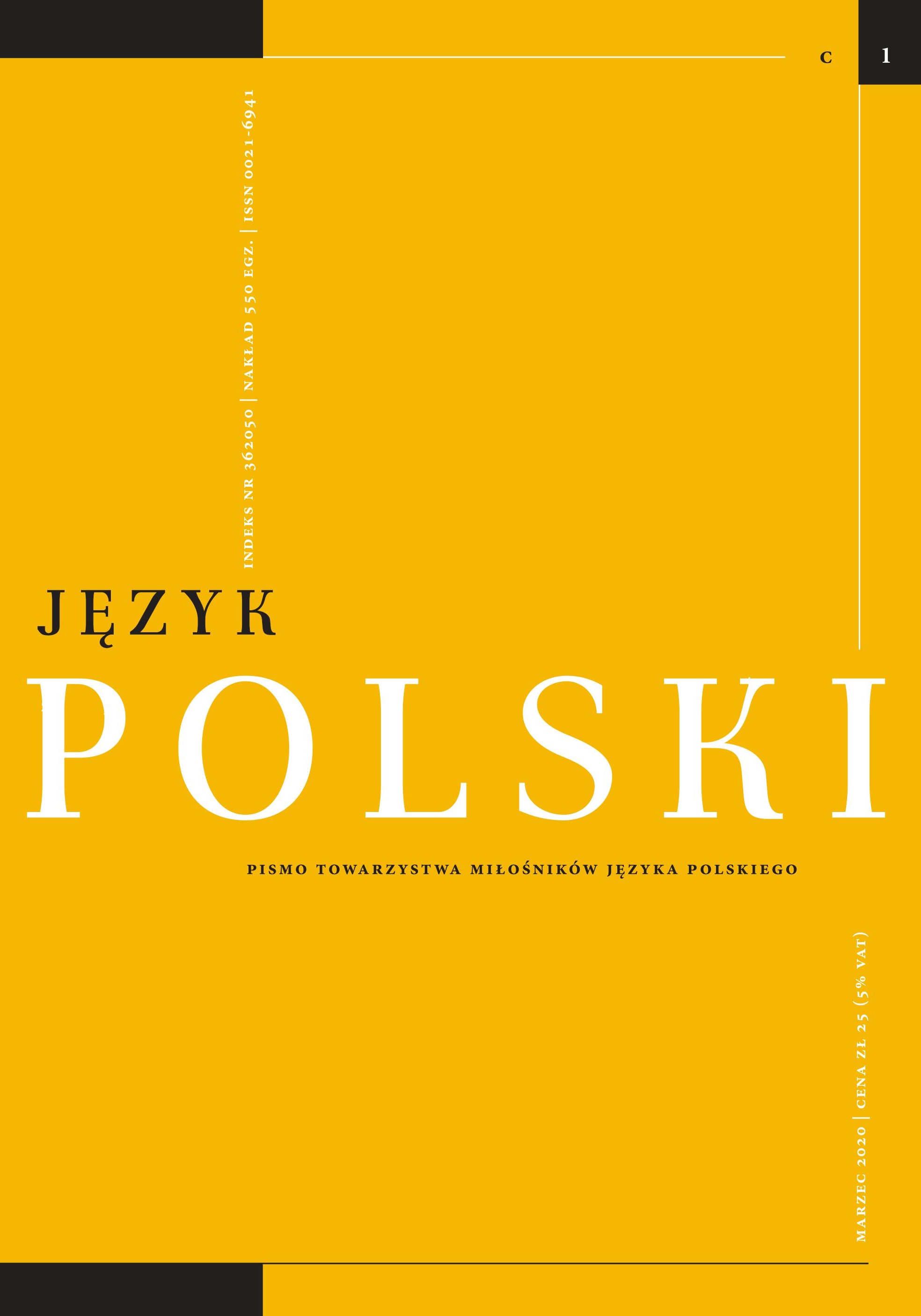Oboczność -a/-u w D.lp. a dwurodzajowość M2/M3 – antysystemowe „skrzyżowanie”
The -a/-u variance in GEN sing. and the M2/M3 double gender – an anti-systemic “cross”
Author(s): Piotr WojdakSubject(s): Applied Linguistics
Published by: Towarzystwo Miłośników Języka Polskiego
Keywords: noun; masculine gender; double gender; inflectional ending; singular genitive; variance
Summary/Abstract: The article draws attention to the co-occurrence of two irregular, or less systemic phenomena affecting masculine nouns: the interchangeability of the -a and -u endings in gen sing. and the M2/M3 double gender (the morphosyntactic variance in acc sing.). It presents a general description of the broadly understood -a/-u variance and the specific characteristics of the M2/M3 double gender (against the background of the category of gender and the phenomenon of gender multiplicity). In the extensive literature devoted to the genitive case, the problem of double gender is not present. It seems arguable to describe the distribution rules for both competing endings within the semantic horizon (inanimacy) rather than within the grammatical one (generic class M3), although it must be admitted that it is the double gender that speaks against the latter approach. The issues raised will be continued by the author in two successive articles in Język Polski: 1) The -a/-u variance in gen sing. and the M2/M3 double gender in the light of dictionary-driven corpus studies; 2) M2/M3 double gender noun units with the -a/-u variance in gen sing. A frequency-based modelling of the relation between endings and gender alternates.
Journal: Język Polski
- Issue Year: 2020
- Issue No: 1
- Page Range: 47-56
- Page Count: 10
- Language: Polish

